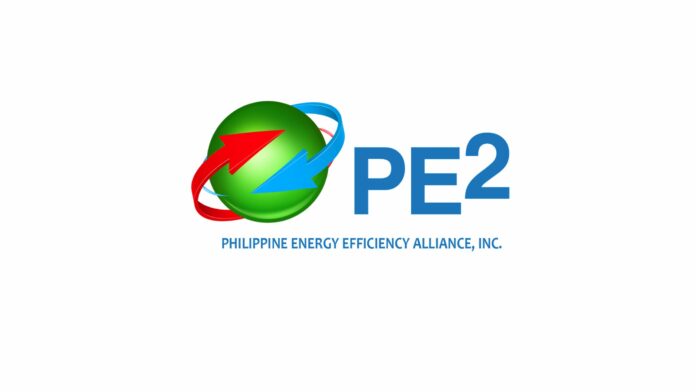The Philippine Energy Efficiency Alliance (PE2) is urging the Department of Energy (DOE) and the Board of Investments (BOI) to consider more projects as eligible for fiscal incentives under the Corporate Recovery and Tax Incentives for Enterprises Act (CREATE) and the Energy Efficiency and Conservation (EEC) Act.
“While we are aware that both the DOE and BOI are reviewing their respective EEC guidelines for fiscal incentives to capture rooftop solar facilities, it may be a suitable opportunity for both agencies to review the list of eligible projects for DOE endorsement and BOI registration,” said Alexander Ablaza, PE2 president, in a statement.
“Beyond the traditional energy efficiency projects aimed at reducing specific energy consumption of private sector and government energy end-users, larger projects involving clean energy production for 100 percent off-take by the establishments should be explicitly included in the list,” he added.
According to the alliance, a “clearer language in the EEC guidelines” on the additional eligible project types will be useful for designated establishments, end-users, energy service companies (ESCOs) and third-party project developers (TPPDs) as they need to apply for fiscal incentives to make their upfront capital investments commercially viable.
In the list submitted to DOE and BOI earlier this week, the alliance proposed that ESCOs and TPPDs be included as well for fiscal incentives.
The group said incentives apply on energy efficiency projects that boost energy efficiency of a system or consumption within a defined project boundary as well as for own-use renewable energy facilities that are not exporting power to the grid, such as but not limited to rooftop solar, own-use biomass, own-use wind, own-use hydro, own-use geothermal energy to displace power or fuel purchases of an energy end-user
The alliance said clean fuel and transition fuel-based generation facilities not exporting power to the grid, such as but not limited to the replacement of bunker, coal and diesel-fed generation of power, heat or cooling with LPG or LNG systems may also be considered for tax perks.
Ablaza stressed that energy storage systems not exporting power to the grid and meant to store energy for use at a later time as well as waste heat recovery or combined heat and power facilities that are not exporting power to the grid and intended to capture waste heat and other forms of waste energy be similarly eligible for tax breaks.
The PE2 also mentioned that district energy systems confined within defined commercial or business districts and economic zones, such as district cooling systems and district heating systems intended to displace end-user production of chilled water or steam, apart from electric vehicle re-fleeting and charging infrastructure intended to displace fossil fuel purchases of an energy end-user for transport vehicles, should also benefit.
Group seeks wider acceptance of energy-efficient projects eligible for tax perks
Energy
The Philippine Energy Efficiency Alliance (PE2) is urging the Department of Energy (DOE) and the Board of Investments (BOI) to consider more projects as eligible for fiscal incentives under the Corporate Recovery and Tax Incentives for Enterprises Act (CREATE) and the Energy Efficiency and Conservation (EEC) Act.
“While we are aware that both the DOE and BOI are reviewing their respective EEC guidelines for fiscal incentives to capture rooftop solar facilities, it may be a suitable opportunity for both agencies to review the list of eligible projects for DOE endorsement and BOI registration,” said Alexander Ablaza, PE2 president, in a statement.
“Beyond the traditional energy efficiency projects aimed at reducing specific energy consumption of private sector and government energy end-users, larger projects involving clean energy production for 100 percent off-take by the establishments should be explicitly included in the list,” he added.
According to the alliance, a “clearer language in the EEC guidelines” on the additional eligible project types will be useful for designated establishments, end-users, energy service companies (ESCOs) and third-party project developers (TPPDs) as they need to apply for fiscal incentives to make their upfront capital investments commercially viable.
In the list submitted to DOE and BOI earlier this week, the alliance proposed that ESCOs and TPPDs be included as well for fiscal incentives.
The group said incentives apply on energy efficiency projects that boost energy efficiency of a system or consumption within a defined project boundary as well as for own-use renewable energy facilities that are not exporting power to the grid, such as but not limited to rooftop solar, own-use biomass, own-use wind, own-use hydro, own-use geothermal energy to displace power or fuel purchases of an energy end-user
The alliance said clean fuel and transition fuel-based generation facilities not exporting power to the grid, such as but not limited to the replacement of bunker, coal and diesel-fed generation of power, heat or cooling with LPG or LNG systems may also be considered for tax perks.
Ablaza stressed that energy storage systems not exporting power to the grid and meant to store energy for use at a later time as well as waste heat recovery or combined heat and power facilities that are not exporting power to the grid and intended to capture waste heat and other forms of waste energy be similarly eligible for tax breaks.
The PE2 also mentioned that district energy systems confined within defined commercial or business districts and economic zones, such as district cooling systems and district heating systems intended to displace end-user production of chilled water or steam, apart from electric vehicle re-fleeting and charging infrastructure intended to displace fossil fuel purchases of an energy end-user for transport vehicles, should also benefit.







